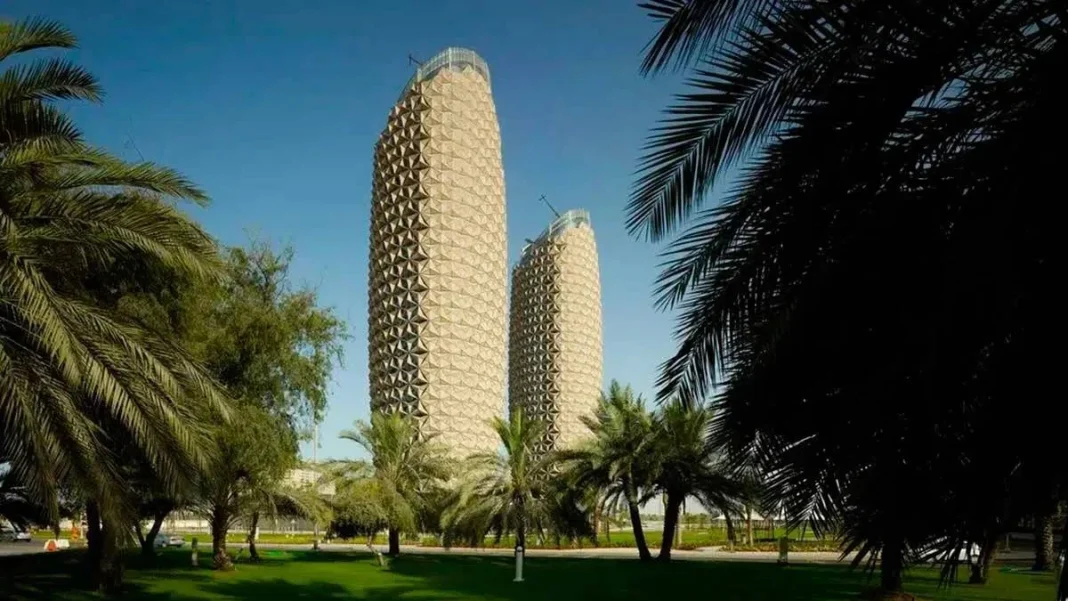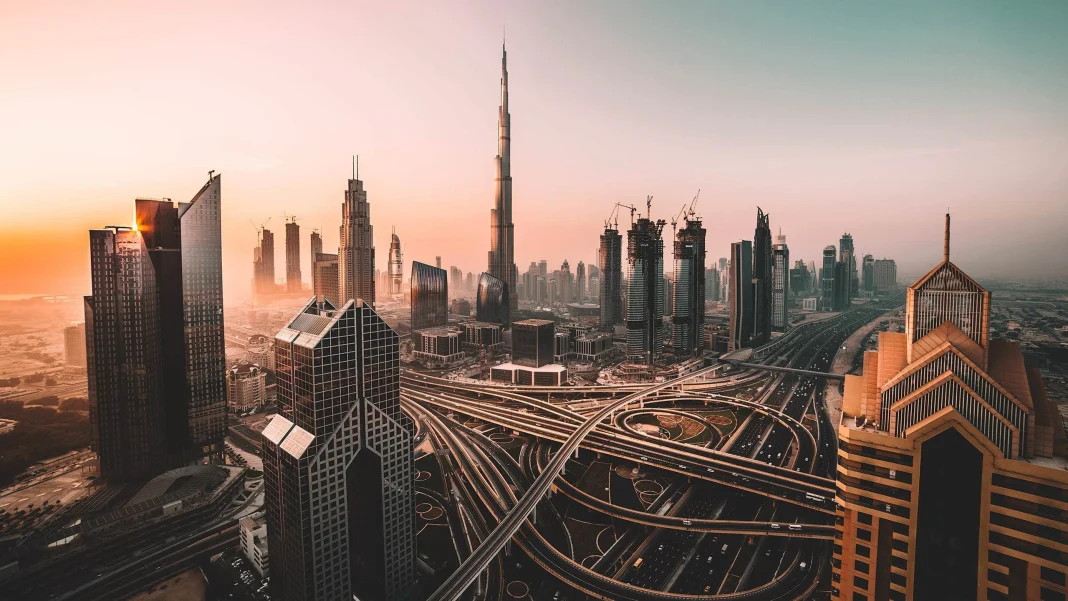Technology is important in the architecture of Abu Dhabi, and smart buildings are part of its structure. The application of technology to the engineering and construction of skyscrapers is one of the distinguishing features of the capital of the United Arab Emirates and what gives it a prominent position in the world.
Among the most striking innovations in the world are the Al Bahr Towers, which were built in 2009 and acquired a unique facade in 2012 with unprecedented technology. This site is one of the most important technological hubs and a potential model for the planet.
The “twin” towers of Abu Dhabi with photosensitive technology
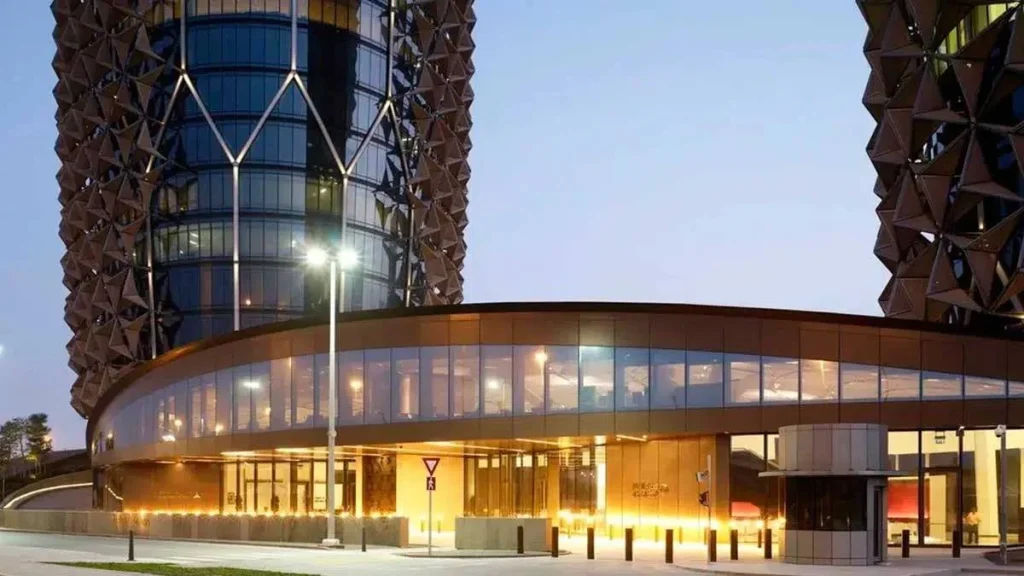
The Al Bahr Towers were designed by architect Abdulmajid Karanouh along with Aedas Architecture, which includes the Spanish specialist Ignacio Gómez. In this partnership, it was decided to build these two towers with 27 floors, reaching heights of 145 and 147 meters and occupying 56,000 square meters of constructed area.
The team responsible for implementing this process incorporated a common element in Emirati architecture known as the mashrabiya, a traditional Arabic feature resembling a balcony lookout protected by latticework. In this way, the project team was able to construct this site by combining the latest technology with elements from the past and the cultural heritage of the region.
The “sensitive facade,” another technology applied to the Al Bahr Towers.
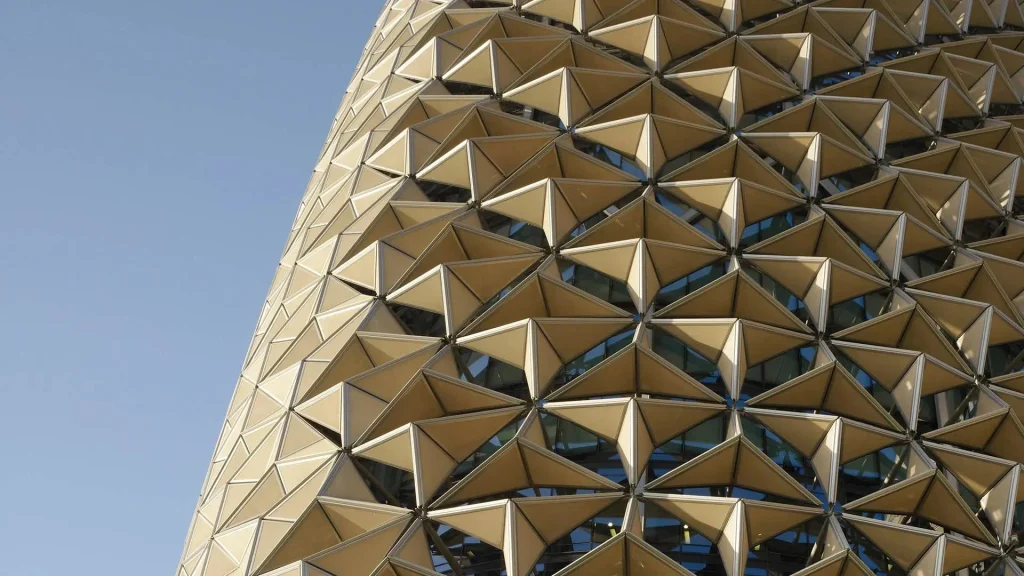
Due to the high temperatures in the region, which in some seasons exceed 45 degrees, buildings must adapt to the conditions and overcome this excess heat. This is why the Al Bahr Towers feature a technology that many refer to as “responsive façade,” which adapts to this climatic condition frequently encountered at these latitudes.
The façade of the towers has metal lattices that fold and open according to solar intensity, resulting in a gain of up to 50%, while improving interior visibility through control. For these towers, the use of air conditioning is unnecessary thanks to this innovative mechanism. The circular plan of the towers has a curtain wall with two facades, one interior made of glass and another exterior with automated lattices, formed by movable metal elements controlled by a central computer that reduce artificial lighting, generating energy savings.
Buildings with sustainable technology
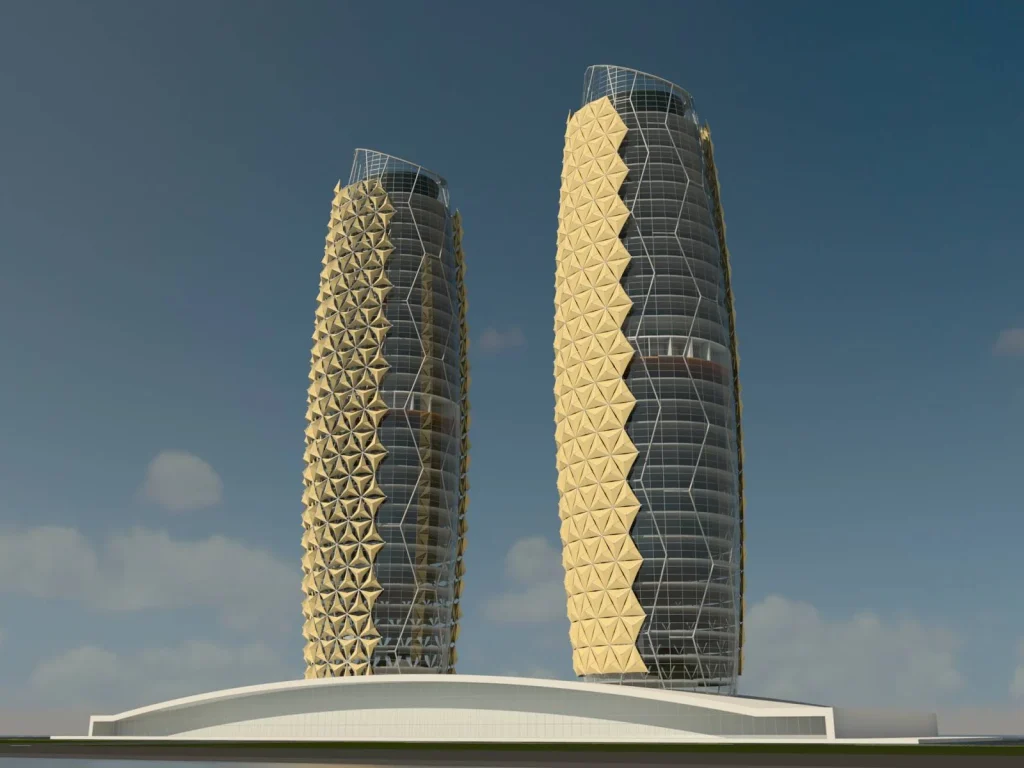
The amazing systems of the Al Bahr Towers summarize that cutting-edge and environmentally friendly technology is part of this ambitious project. The photosensitive façade system allows for savings of up to 40% in carbon emissions, which translates to 1,750 tons of CO2 not emitted each year. In addition to this technology, the system used for these buildings enabled the installation of photovoltaic panels that reduce electricity consumption.
The constructions feature a cut in the movable façade designed not only for aesthetics but also to introduce gardens that employees and residents can enjoy. According to the executing company, these lattices have been made with carbon fiber to fulfill two functions: being parts of great strength and low weight, facilitating the work for the main support structure. These carbon panels have micro-perforations that allow the passage of a certain amount of light, preventing the absence of light in conditions of high solar intensity. This complex also has common areas, such as prayer rooms, restaurants, and an auditorium for conferences and talks.

